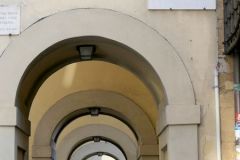The Italian city of Firenze (Florence) played a very central part in the transition between the Middle Ages and the new times. Join me on a visit to the Historic Centre of Florence.
The UNESCO World Heritage List includes more than a thousand properties with outstanding universal value. They are all part of the world’s cultural and natural heritage.
Official facts
- Country: Italy
- Date of Inscription: 1987
- Category: Cultural site
UNESCO’s World Heritage Centre’s short description of site no. 174:
“Built on the site of an Etruscan settlement, Florence, the symbol of the Renaissance, rose to economic and cultural pre-eminence under the Medici in the 15th and 16th centuries. Its 600 years of extraordinary artistic activity can be seen above all in the 13th-century cathedral (Santa Maria del Fiore), the Church of Santa Croce, the Uffizi and the Pitti Palace, the work of great masters such as Giotto, Brunelleschi, Botticelli and Michelangelo.”
My visit
I really don’t know what to say. Looking back at my visit in 1991 it is clear that Florence (Firenze as I would like to call it) deserves its reputation as a beautiful city, and even more so because of its importance in the Renaissance. However I felt at the time of visiting the city that its reputation was a bit exaggerated. This is what I wrote in my diary:
“We walked the few hundred metres to the Cathedral. It has a wonderful structure and we climbed to the top. Later on we walked the streets to the bridge of Ponte Vecchio with the small shops. Afterwards we stumbled our way to a viewpoint of the city, in the “woods”. In the evening we got drunk at a family restaurant on a mega-bottle of wine. Nice city, a lot to see. Not as much as expected, by far actually.”
I revisited the city in 2017 and had a rather different revelation.
Read more about my visits in 1991 and 2017.
Browse to the PREVIOUS or NEXT post in this series.





